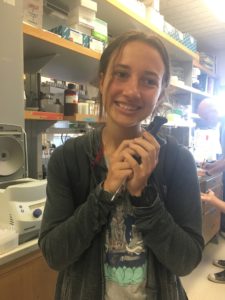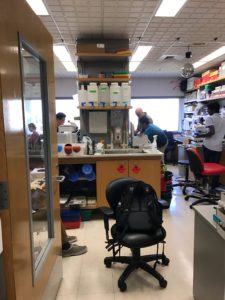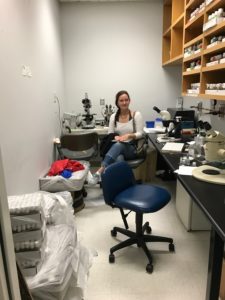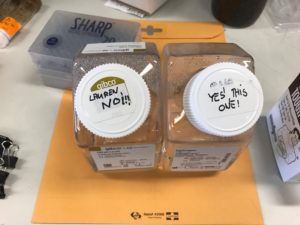Hello all!
My name is Lauren Fidelak and I am a rising sophomore (class of 2021) majoring in Cell and Molecular Biology. As of now, I am on the pre-med track, however that is subject to change in the coming years. I am particularly interested in a career in research, especially in developmental biology, so I am looking into more PhD and MD/PhD programs. This year, I spent most of my free time in the lab of Dr. Fenglei He, studying the role of platelet derived growth factor receptor alpha (pdgfra), a receptor tyrosine kinase, in normal craniofacial development. I will continue working for Dr. He in the fall, and plan to begin my own research project as soon as I return to campus!
This summer I will be returning to the laboratory of Dr. Seung Kim at Stanford University’s School of Medicine. Dr. Kim’s lab investigates pancreatic development in regards to pancreatic islet dysfunction (especially in diabetes) and the diagnosis of pancreatic cancers. This will be my second year working for Dr. Kim, and I look forward to returning with the knowledge and experience gained during my first year at Tulane. I will again assist in generating LexA-LexAop gene expression tools in Drosophila melanogaster (fruit flies) to be used as a model for their research and for experiments in labs across the world. Through carefully controlled breeding, molecular amplification and sequencing, dissections, and fluorescent microscopy, we are able to decipher the location and expression of a mobilized transposon, thereby creating a powerful and precise too for further research. Dr. Kim’s lab takes special interest in the lines found to control genes related to insulin production and regulation, however other lines are often sent to labs across the world for use in their projects. Research in Dr. Seung Kim’s laboratory provides me with a unique opportunity to contribute to the foundation and advancement of scientific knowledge. If a researcher in the lab discovers a novel insertion (as I did last summer under Dr. Kim) the new location is branded with the researchers initials, forever carrying the mark of its founder. Therefore, my work in Dr. Kim’s laboratory not only allows me to conduct research that adds to the volume of scientific knowledge, but also to create novel technologies that may be used in research across the world. My initials will follow the transposon from laboratory to laboratory, a lasting mark on the scientific community and a tangible representation of the rise of women in STEM.
By August (the end of my time in Dr. Kim’s lab), I hope to have developed my skills as a researcher, generate and visualize a novel genetic insertion, and form connections with other lab members and others in the Stanford community.
If you are interested, here is the link to the previous publication (many more lines have been generated since): https://www.ncbi.nlm.nih.gov/pubmed/27527793
Please enjoy the silly pictures from last year… we had a blast!




